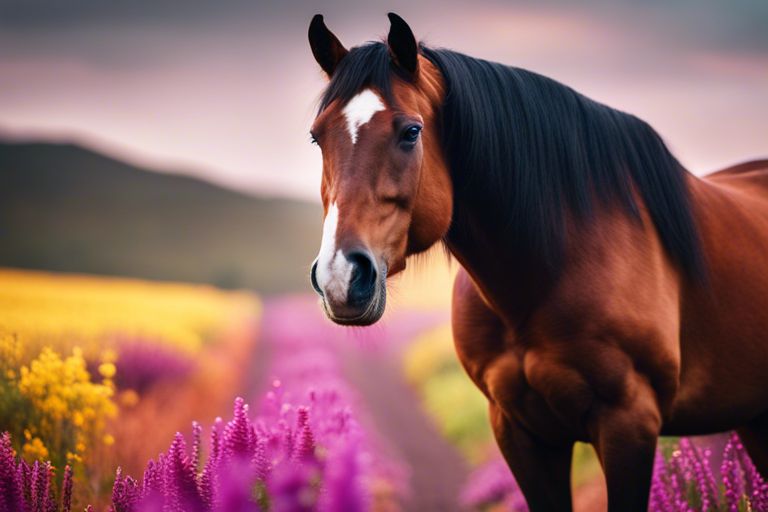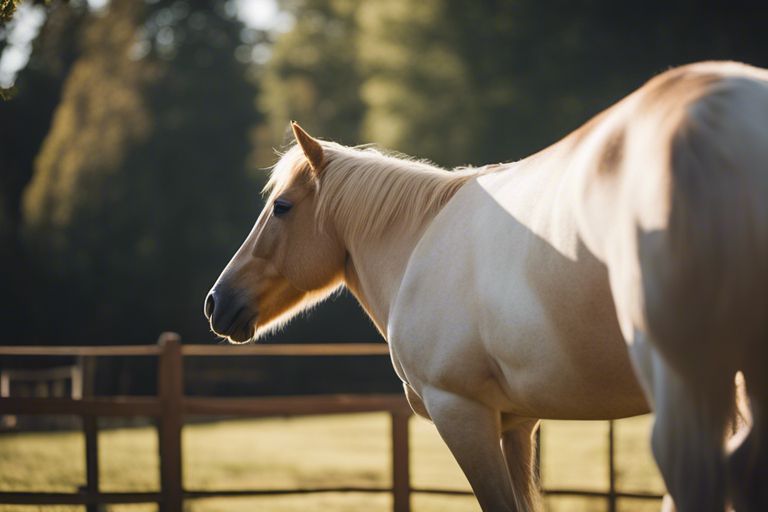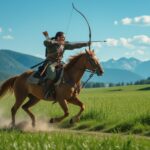It’s fascinating to explore how horses perceive the world around them. In this blog post, you will investigate into the intricacies of horse vision, uncovering their unique abilities and limitations. Let’s begin on a journey to understand how horses see the world, gaining a deeper appreciation for these majestic animals along the way.
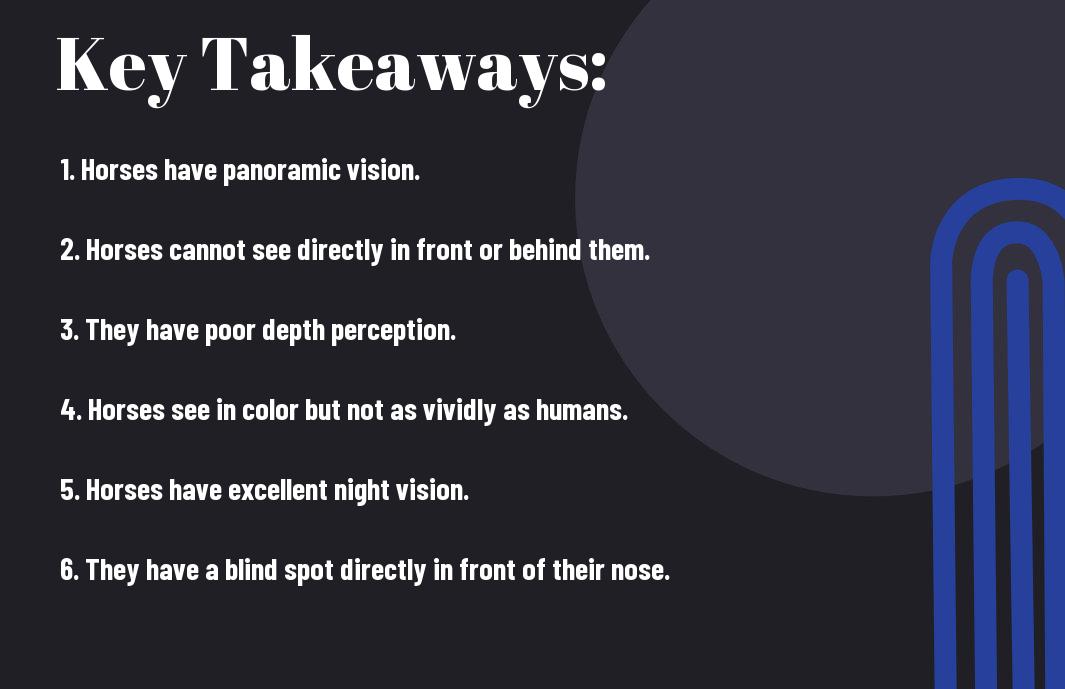
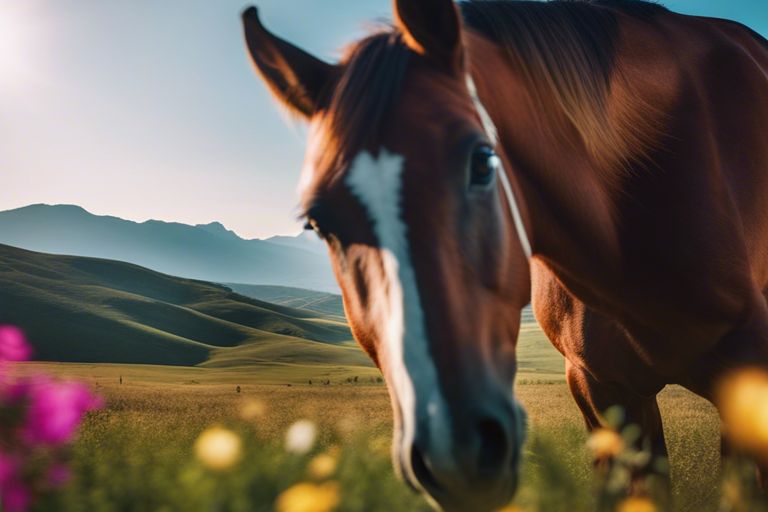
Horse Vision Basics
Anatomy of the Horse Eye
For a horse, sight is one of the most crucial senses. Understanding the anatomy of the horse eye can give you insight into how they perceive the world around them. Horses have large eyes positioned on the sides of their heads, giving them a wide field of vision. This placement allows them to see predators approaching from all angles, a trait that has been passed down through generations of evolution.
Visual Acuity and Field of Vision
Anatomy plays a significant role in a horse’s visual acuity and field of vision. The positioning of their eyes allows for excellent peripheral vision, giving them a 360-degree view of their surroundings. However, their depth perception and ability to focus on objects directly in front of them are not as strong as humans.
Visual acuity refers to the sharpness of vision, and horses have excellent daytime vision due to a high density of rods and cones in their eyes. This enables them to see well in bright light. However, their night vision is limited compared to some other animals, as they have fewer rods in their retinas.
Color Perception
Can Horses See Colors?
Little is known about how horses perceive colors compared to humans. It was once believed that horses could only see in shades of gray, similar to dogs, but research has shown that horses are not completely color-blind. While not as vivid as human color vision, horses can see some colors. They have dichromatic vision, meaning they see predominantly in blues and yellows.
Color Blindness in Horses
Blindness in horses is quite rare, but they can have color vision deficiencies. Color blindness in horses usually means they have difficulty distinguishing between certain shades of colors, rather than complete color blindness. This deficiency may affect their ability to differentiate between colors in their surroundings. However, it is important to note that this does not heavily impact their daily activities.
Another interesting fact about color vision in horses is that while they may have limitations compared to humans, their visual acuity and sensitivity to motion compensate for their color perception. So, even with color vision differences, horses are still able to navigate their environment effectively.
Depth Perception
Despite having large, expressive eyes, horses have a different way of perceiving depth compared to humans. Understanding how horses judge distance is crucial in their interactions with the environment and other horses.
How Horses Judge Distance
An important aspect of a horse’s depth perception is how they use their monocular vision, which is the vision from one eye at a time. This type of vision allows horses to have a wider field of view but may affect their ability to accurately judge distance. When you see a horse cautiously approach a new obstacle or navigate uneven terrain, it is because they rely on subtle visual cues and other senses to determine the distance and safety of their surroundings.
Importance of Binocular Vision
The horse’s binocular vision, where both eyes work together, plays a crucial role in their depth perception. Binocular vision provides horses with a more accurate representation of the distance and size of objects in front of them. This ability is particularly important when horses are in motion, such as jumping obstacles or navigating tight spaces. The overlap of the visual fields of both eyes helps horses to perceive depth more effectively, allowing for better coordination and judgment of their surroundings.
Binocular vision also enhances a horse’s ability to focus on a single object and assess its distance accurately, which is imperative for their safety and well-being. Horses rely on their binocular vision when interacting with their environment and other horses, enabling them to move confidently and react swiftly to potential threats or obstacles in their path.

Visual Processing
Once again, venturing into the fascinating world of horse vision, let’s take a closer look at how these majestic creatures process visual information. Understanding how horses see the world can provide valuable insights into their behaviors and reactions to their surroundings.
How Horses Process Visual Information
Visual processing in horses happens differently than in humans. Horses have a large blind spot directly in front of them and prefer to use monocular vision rather than binocular vision. This means each eye functions independently, allowing them to have a wider field of view and better detect movement. Horses use their binocular vision, where both eyes work together, primarily for depth perception.
Role of the Brain in Horse Vision
With the ability to process visual information quickly, horses rely on their brain to make split-second decisions based on what they see. The horse’s brain plays a crucial role in interpreting visual cues and signals received from their eyes. This rapid processing helps horses react swiftly to potential threats or changes in their environment.
Vision is a vital sense for horses, crucial for their survival in the wild. Their keen eyesight allows them to detect predators from afar and perceive subtle movements in their surroundings. Understanding how horses use their visual processing and the role of their brain in interpreting this information can help us better comprehend their behaviors and needs.
Visual Adaptations
Adaptations for Day and Night Vision
To understand how horses see the world, let’s probe into their visual adaptations. Horses have evolved to have remarkable vision that aids them in both day and night settings. Their eyes are positioned on the sides of their heads, providing them with almost 360-degree vision, allowing them to detect predators from various angles. Additionally, horses have a high proportion of rods in their retinas, which are specialized cells that enhance their ability to see in low light conditions. This adaptation makes them well-suited for both grazing during the day and being vigilant at night, as they can detect movement and potential threats in dim light.
Adjusting to Changes in Light
The eyes of a horse have a unique ability to adjust rapidly to changes in light. They can dilate their pupils to allow more light in during low-light conditions, and constrict them in bright conditions to prevent damage from excessive light exposure. This rapid adjustment helps horses maintain optimal vision in varying light environments, whether they are in a dimly lit barn or out in the bright sunlight.
Additionally, horses possess a reflective layer behind their retinas called the tapetum lucidum, which enhances their night vision by reflecting light that passes through the retina back into it. This boosts their ability to see in the dark, giving them a distinct advantage when navigating low-light situations.
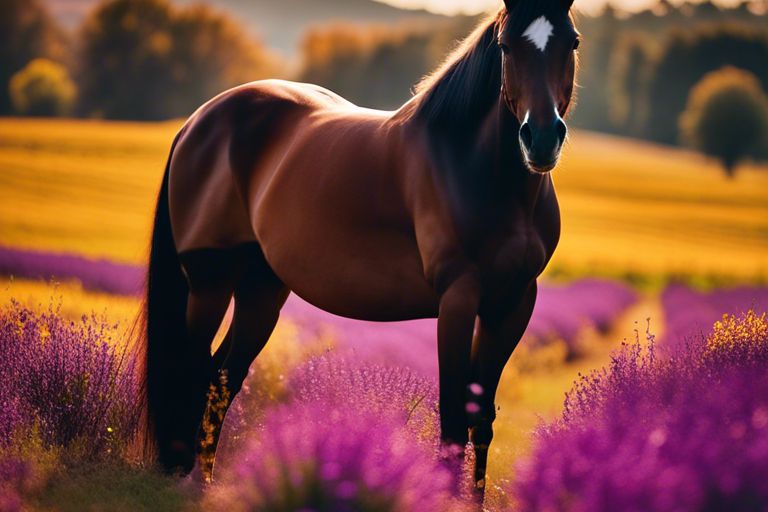
How Horses See Their Environment
Recognizing Shapes and Objects
For horses, **recognizing shapes and objects** in their environment is crucial for their survival. Their vision is designed to detect contrasts in colors and shapes rather than fine details. **This ability helps them** identify potential predators or obstacles in their surroundings. **Horses can easily** spot a predator lurking in the bushes or a fallen branch on the trail.
Detecting Movement and Motion
For horses, **detecting movement and motion** is a key aspect of their vision. **Their keen ability** to detect even subtle movements is a result of their evolutionary adaptation as prey animals. **Horses are** highly sensitive to any changes in their surroundings, allowing them to react swiftly to potential threats.
It is important for **horse owners and handlers** to be aware of this sensitivity to movement when interacting with horses. Quick, sudden movements can startle a horse, triggering their flight response. **By understanding** how horses perceive motion, you can better communicate with them and ensure their comfort and safety.
Perceiving Spatial Awareness
Spatial **awareness is vital** for horses to navigate their environment effectively. **Their binocular vision** allows them to judge distances accurately, a skill honed over centuries of evolution. **This ability helps them** distinguish between objects up close and those in the distance, making them adept at maneuvering through varied terrains.
For instance, **horses can perceive** the width of a narrow path or the height of a jump, adjusting their movements accordingly. **Their spatial awareness** plays a significant role in their performance in various activities, from trail riding to show jumping.
To wrap up
So, through this exploration of how horses see the world, you have gained valuable insight into the visual abilities of these magnificent animals. Understanding their unique vision, with its panoramic view and sensitivity to movement, can help you better appreciate and interact with horses. By recognizing their visual strengths and limitations, you can build a stronger connection with these animals, whether you are a seasoned equestrian or simply an admirer of these beautiful creatures.
Q: How do horses see the world differently from humans?
A: Horses have monocular vision, meaning they see different things with each eye, which allows them to have a wide range of vision around their bodies but with less depth perception compared to humans.
Q: Do horses see color like humans do?
A: Horses have dichromatic color vision, which means they can see colors but not as vividly as humans. They are most sensitive to greens and blues and have difficulty distinguishing reds and oranges.
Q: Can horses see in the dark?
A: Horses have better night vision than humans due to a high number of rods in their eyes, which are light-sensitive cells. They can see better than humans in low light conditions, but their vision is not as sharp as during the day.
Q: How do horses use their vision to stay safe?
A: Horses rely on their wide peripheral vision to detect predators and danger approaching from various angles. They also use their keen sense of motion detection to quickly react to potential threats in their environment.
Q: Can horses see in the rain or snow?
A: Horses can see through rain and snow to some extent, but heavy precipitation may distort their vision and make it difficult for them to see clearly. They may rely more on their sense of hearing and smell during such conditions.
